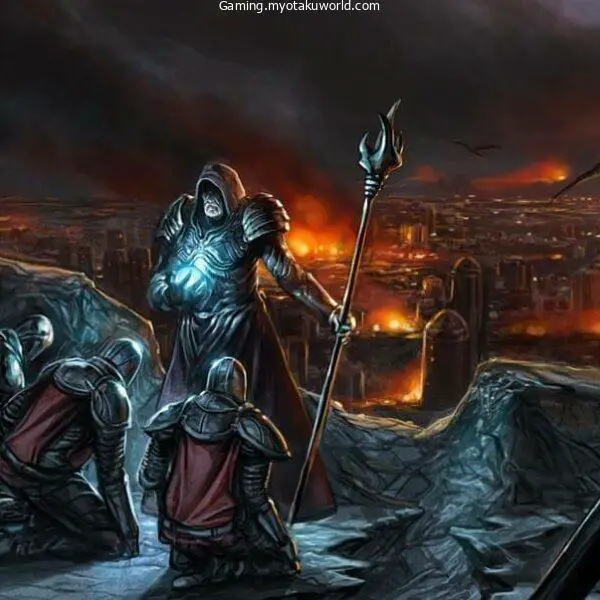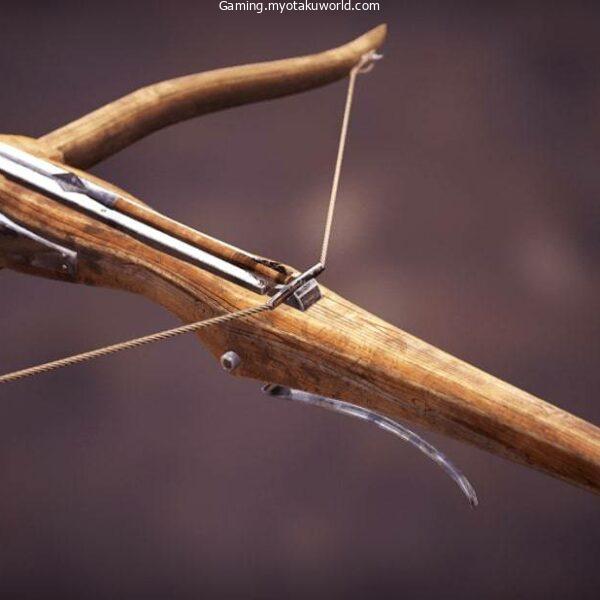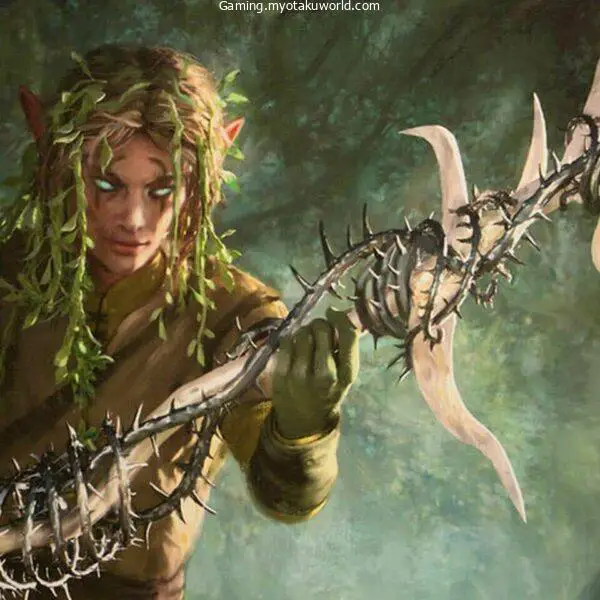The Circle of the Shepherd, a druid subclass, was published in the 5th Edition supplement Xanathar’s Guide to All (XGE).
It focuses on the druid’s protection role against beasts and other fey creatures. Many abilities can be summoned to help you fight.
This Circle of the Shepherd Guide will show you why this is such a great choice for druids who want to support other druids.
You will be able to conjure allies and cast area-of-effect spells while you support your party.
Circle of the Shepherd Features
You will learn Sylvan, a fey language, and how to communicate with beasts at the 2nd level.
Although beasts can understand your language, your DM will decide how much information you are able to extract from the animals that you encounter.
The Spirit Totem is a key feature of this class. One of three spirit totems can be summoned, whose aura covers a 30-foot radius.
This is sufficient to cover most of the battleground. Summoning the spirit requires a bonus act. You can move it as a bonus action for one minute. This ability can be used once per short break.
These are the three spirits that you can choose from:
- Bear spirit. All creatures within the aura get temporary hit points and gain an advantage on Strength checks. The Strength advantage is not useful to allies that rely on grappling and shoving. However, the temporary hit point is more useful the more allies you have.
- Hawk Spirit. Your reaction can be used to give an advantage on an attack or for your party’s advantage in perception checks. This uses your reaction so you can only grant advantage one round, but it is still very useful.
- Unicorn Spirit. Cast a healing spell to give your party an advantage in all ability checks to detect creatures. You can heal your entire party by using a simple Healing word.

You can become a Mighty Summoner at the 6th level. Every creature you summon or create has 2 extra hit points for each hit die and their attacks can be magical.
Your summoned creatures will be extremely durable if they have additional hit points and the unicorn or bear spirit. Your creatures must be able to use magical attacks to fend off higher CR monsters.
With the addition of summoning spells in the Tasha’s Cauldron of All (TCoE) the Circle of the Shepherd has seen an increase in ineffectiveness.
Many of these spells summon creatures with static hit points. They don’t appear to be able to get the Mighty Summoner ability, which gives them additional hit points.
Your DM may say that you can increase 2 hit points for each level of the spell, or something similar.
Your summoned creatures will regain hit points equal to half of your druid levels at the 10th level after they have completed their turn in your aura.
This increases their durability and encourages you to summon as many creatures as possible.
At the 14th level, four CR2 creatures are automatically summoned when you reach 0 hit points, or when you become incapacitated.
If you don’t command them, they will follow your orders or protect you. They last an hour and do not require concentration.
If you are able to recover from an incapacitating spell, another summoning spell can be cast on top to bring more creatures.
Core Druid Abilities

You’ll also want to maximize your core class abilities, in addition to the subclass features. This includes spellcasting and Wildshape for the Druid.
Wild shape
The Circle of the Shepherd is more interested in spellcasting than Wildshaping but there are still ways to make use of this.
You can transform yourself into a huge wolf spider at low levels to climb walls and avoid melee attacks.
You can use your reaction to gain an advantage in attacks and this works well with the hawk spirit.
You will not be able to use your attack action, unfortunately. To gain an advantage in another attack, you can always drop next to an enemy.
You can start to pick creatures with high Strength scores as you move up to the high level. The bear spirit will allow you to grapple with your enemies.
You should ensure that your party can follow up with additional attacks.
Your Wildshape feature from TCoE Wild Companion is by far the most useful. It allows you to cast Familiar with no material components.
You familiar will also benefit from the additional summoning abilities, including magical attacks and hit points.
Spells
Druids are able to prepare new spells every single day so you don’t need to keep a list. Keep track of the spells that you use most often and those you want to eliminate.
You might need to prepare spells such as Animal Friendship if you are a druid. These spells are especially useful for Circle of the Shepherd druids.
The abilities of Circle of the Shepherd druids to summon creatures in battle are the basis of their Circle of the Shepherd druid status.
Your time will be spent at the backline, summoning creatures and casting area of effects spells. You’ll also provide support to your allies.
You will find that upcasting conjuration spells are very useful at higher levels. However, it is possible to prepare non-concentration spells of high quality.
Cantrips
Start with two cantrips. You can choose Guidance or Produce Flame. Guidance can be used to support your allies in combat.
This is not always possible at higher levels if you are concentrating on summoning a creature.
You can however swap it out later using the Cantrip Versatility option. Produce Flam is a destructive cantrip you can use to regain your spells.
1st Level Spells
Prepare Entangle for control of the battlefield, Faerie Fire for dealing with invisible creatures or giving an advantage on attacks.
You can also prepare to throw one down in combat. To heal allies and cast cantrips with your bonus action, prepare Healing Word.
Your Unicorn Spirit makes The Healing Word extremely powerful. It only requires a bonus action and has a range, so it’s a better choice than Cure Wounds.
Another great option is Absorb Element to protect yourself from incoming elemental damages and Thunderwave to keep your distance.
You might consider creating utility options such as Detect Magic if you are the sole spellcaster in your group.
If you are not the only spellcaster in your party, consider preparing utility options like Detect Magic.
2nd Level Spells
Prepare Summon Beast and Spike Growth. Pass Without Trace. Healing Spirit. This is your first summoning spell, Summon Beast.
Spike growth places your enemies in a field full of thorns. They deal 2d4 damage for every square they move and move half as fast.
As your allies take them out with arrows, you can sit back and enjoy the laughter.
Pass Without Trace grants your entire party a +10 Stealth. This makes you as stealthy and as agile as Batman. Healing Spirit can heal 1d6 each turn.
3rd Level Spells

Prepare Summon Fey and Revivify. Lesser Reveal. Dispel Magic.
Conjure Animals will be one of the best spells you can use. You can choose to summon much weaker or stronger beasts. While the DM will ultimately decide which beasts you summon, you can tell them what you want to summon. You can combine more creatures with your unicorn spirit and bear spirit, and other subclass features.
Summon Fey allows you to summon a fey spirit that will fight for you. The spirit can teleport around the battlefield and attack with a shortsword. It does not deal as much damage as your summoned beast. You might consider buffing your fey using a different weapon or how you might use their Teleport Utility. You can also cast Summon Beast with a 3rd-level spell slot.
Revivify is a way to bring someone back from the grave. It is the strongest 3rd-level resurrection spell and one of its most powerful.
Lesser Resurrection and Dispel Magic allow you to end any ongoing magical effects. While the former can only be used in situations where you or your friends are suffering, Dispel Magic is able to be used to end any spells in the game.
4th Level Spells

Prepare Summon Elemental and Wall of Fire
Similar to conjuring animals, conjuring woodland beings is one of your most powerful spells. It allows you to summon any number of fey creatures of your choosing.
Choose the largest number of creatures possible. You can summon any pixies to cast Polymorph constantly on your enemies until they are fighting a few frogs.
You can cast Polymorph to transform one creature into a harmless, small animal if you haven’t summoned any pixies. This is a great way to disable a powerful enemy, while you deal with weaker opponents or run away.
Summon Elemental summons a single elemental animal. Although it is less powerful than the other spells, it offers unique options such as a flying elemental or one that is immune to fire damage.
Wall of Fire can be used to command a battle even if you aren’t summoning creatures. You can divide the battlefield with a fiery barrier, or encircle enemies while you run.
5th Level Spells
Prepare Greater Restoration and Reincarnate to heal, Conjure Elemental to summon a stronger singular creature, Scrying for spying on your enemies, Wall of Stone and Maelstrom to create great effects in a large area.
6th Level Spells
Prepare Healing for single-target healing. Heroes’ Feast will buff your entire party. Wall of Thorns is needed to manage the battlefield.
7th Level Spells
To travel through the multiverse, prepare Plane Shift and Mirage Arcane. This will create an illusionary fortress that could become real.
8th Level Spells
To disable an enemy’s power or to destroy your Tsunami, prepare Feeblemind. The casting time for the former is 1 minute. It won’t work against a gargantuan or gargantuan dragon, so it’s best not to cast it.
9th Level Spells
Foresight will be a useful tool to boost an ally and keep you in the backline. Prepare shape change to transform into a dragon.
Races
You can prioritize races by giving them a +2 to Wisdom if you aren’t using the Customized Origin feature of TCoE. This includes Custom Lineage and Hexblood, Reborn, and Firbolg.
These options are great if you’re customizing your origin. Other options include the Aarakocra to fly, the Mountain Dwarf to get two +2 bonuses, and the Tortle to increase your AC.
Feats

Resilient Constitution. This feat increases your Constitution by 1 and gives you proficiency in Constitution saving throws. These are useful for keeping your attention on spells. Because you are dependent on summoning spells, almost all your attention will be on one spell.
Metamagic Adept. Use Extended Spell to increase the life span of your summoned creatures.
Lucky. This feat is great for anyone and can be used to maintain concentration to summon the creatures.
FAQs
Is the Circle of the Shepherd able to Wildshape?
Yes. However, the subclass is built around spellcasting which you can’t do while in a wild shape. Higher levels allow you to summon creatures and use Wildshape for protection against your enemies.
In which book is the Circle of the Shepherd?
It’s published in Xanathar’s Guide to Everything.
What is the ability of a shepherd druid to summon?
Shepherd druids have the ability to summon a spirit-totem at level 2 that enhances any creature they choose. They can also cast many summoning spells, such as Conjure Wild Animals or Conjure Woodland Beings.
Can I use my Wildshape spirit totem?
Yes.
What is the druid circle?
Circles refer to the druid subclasses. There are seven official circles for druids: Circle of the Land; Circle of the Moon; Circle of Dreams; Circle of the Shepherd; Circle of Spores; Circle of Wildfire and Circle of Stars.
How many spells are a druid capable of preparing?
You can prepare as many spells each day as your Wisdom modifier plus your druid level. A Wisdom modifier of +3 means that a 3rd-level druid can prepare six spells per day using the druid spellbook.
Which race is the best for druids?
The Firbolg is the perfect race for druids with innate nature magic and significant ability scores increases.
Final Words
The Circle of the Shepherd Druid is a powerful support spellcaster.
Your spirit totem aura can keep your party alive, grant you an advantage in attacks, and summon powerful creatures to the battlefield.
The action economy is a key component of the 5th edition. You can win multiple encounters on your own by summoning additional creatures that will give your team more action.









